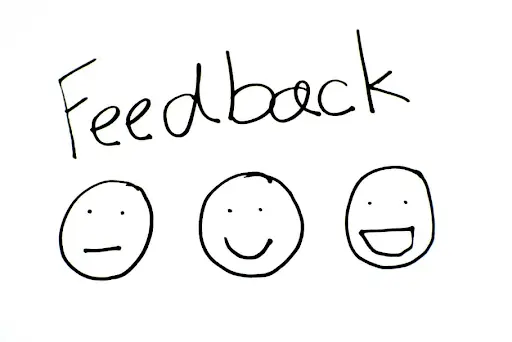Software as a Service, or SaaS, is the tech world's powerhouse for getting things done in business today.
Imagine it this way. The software part is what users work with. And the service? That’s about giving them reasons to stick around and keep using your product. If you want your SaaS to be more than just a one-hit-wonder, you need to get really good at Product Service Management (PSM).
It’s kind of like working backstage, making sure that after your big opening night (aka launch), the show keeps on dazzling. PSM folks are conductors tuning up their orchestras—the PMs, devs, everybody—into harmony so smooth it would make Tchaikovsky jealous.
So, where does this unsung hero fit into the grand blueprint of tech teams? Let’s unpack that. Recognizing our behind-the-scenes virtuosos makes really smart business sense.
Product Service Management in a Nutshell
Step into the realm of SaaS, and you'll see that what keeps users coming back isn't just the software. It's about how this software is served up—how it’s kept shiny, running smoothly, and constantly improving.
This is where Product Service Management (PSM) steps in. It ensures your product stands out not as a passing fad but as an essential part of your customer’s digital day-to-day.
What Exactly is PSM?
PSM, short for Product Service Management, centers around keeping your software in tip-top shape after it hits the market.
Unlike traditional product management, which is all about getting a product out there with the right features and functions, PSM hones in on what happens next. It’s focused squarely on customer experiences. Making sure they stay spot-on from their first login onwards.
The Difference Between PSM and Regular Product Management
If we were to compare roles:
- Typical product managers lay down blueprints and watch skyscrapers rise (so to speak).
- Folks working in PSM are there day-by-day, ensuring everything runs like clockwork post-launch and every user feels taken care of.
That ongoing dedication to service after your software is live? That's what makes PSM stand out—it paints a fuller picture, showing how much shine those bells and whistles keep over time based on the feedback of real people using them.
Teamwork Makes the Software Work
In the SaaS world, PSM gurus are like diplomats marrying customer voices with techie talk.
They’re in charge of scooping up all sorts of feedback from users, crunching data on how people use the software, and sniffing out any hiccups along their journey that might not stand out to others who are deep into coding or design features.
PSM folks bring these human-focused insights to product managers and developers so that when it's time for an update or a fix, it’s done with real-world user experience front and center.
Case in Point: The Pop-Up Assistant Quandary
Let's say you've got this AI pop-up assistant—we'll call her Mandy—meant to be a lifesaver helping users around your site.
While she’s cool on desktops, over on mobile devices…not so much. Mandy takes up a considerable portion of the screen, making browsing more annoying than anything.
Savvy PSM players spot issues like these via user comments signaling SOS about our friend Mandy stealing too much screen real estate.
From Feedback to Fix
Once the PSM team has gathered solid user input, it's time to huddle up with the design crew, UX experts, and engineers.
The goal? Crafting a game plan for Mandy’s makeover on mobile devices. It could be something like toning down her flair so she’s less in-your-face or enabling users to give her a shout just when they need her—not when they don't.
And this is about more than patching up glitches. We're talking about enhancing how people interact with your product so it feels seamless and shows you've really listened.
With every tweak suggested by PSM know-how leading the charge, your product keeps getting better—one update at a time.
Now, Mandy is not just handy but also hits it off with folks, whether they're tapping on phones or clicking away at keyboards. She shows off how committed you are to ensuring everything works great no matter where users log in from.
This partnership among PSM pros, PMs, and tech teams highlights what happens when everyone aims together: Innovation starts feeling natural because user feedback drives each leap forward.
The Strategic Home Base for the PSM
Product Service Management, or PSM, tends to set up camp right where customer success, product muscle-building (aka development), and the day-to-day ops mingle.
It's a bit like being in the eye of the storm—a spot chosen not by chance but on purpose. Why? It lets those specializing in PSM tap into conversations across different teams, legitimizing user feedback and experiences.
At the Hub, Where Decisions Get Made
Being ‘right in the thick of it’ is crucial for guiding products down that golden path of getting what customers want.
PSM employees have an all-access pass: They pull insights from sales chats, support tickets, and engineering updates, then mash that info together, shaping how your products grow.
By bridging gaps between departments and higher-ups, PSM experts ensure customer perspectives aren't just sideline chatter—they're the playbook.
Making Waves as a PSM Pro
If you're in the world of Product Service Management and aiming to really make your mark, here's the thing:
It's all about how you use data and what users tell you.
You've got to weave that feedback into hard-hitting points that push for strategy shifts or design tweaks.
And remember, making friends across the company can seriously crank up the volume of your suggestions.
When you come armed with solid research and keep those lines of dialogue wide open, your ideas have a much better shot at shaping how things get done—and proving just how indispensable folks like yourself are when it comes to nailing customer joy.
Fine-Tuning Your Approach with PSM
In the world of SaaS, getting PSM right could be what makes your product shine brighter than the rest.

To hit that sweet spot, though, there are a couple of things you need to lock down. Great PSM practices revolve around tuning into users—what they love and what's bugging them—and then delivering solutions that make their day.
But how do you track if you’re on point? Here’s where it gets quantifiable: we look at metrics.
Quick Guide to PSM Best Practices:
Listen Up When Users Speak: Every piece of feedback is precious. Stay in touch with surveys, or just ask directly so you can learn from those using your stuff.
Never Stop Improving: Take what people tell you and put it back into making your product even better—a perpetual motion machine aimed at user happiness.
Join Forces for Impact: Get everyone onboard—from devs to customer service—to ensure each bit of user intel informs a united push toward nailing those enhancements.
Key Metrics to Keep an Eye On:
Customer Satisfaction Score (CSAT): This boils down to how pleased folks are with what you're putting out there.
Net Promoter Score (NPS): The big question is whether people like your product enough to tell their friends about it.
Customer Effort Score (CES): You want things smooth for users—how effortlessly can they reach their goals using your product?
Churn Rate: It’s crucial, unfortunately. Who's bidding goodbye and why? Understanding this helps in keeping them around.
Feature Usage Rate: Dive into the data ocean to see which of your features are getting love and which ones aren't.
When you get these metrics matched nicely with business objectives and PLG tactics, zoom in on those that matter most for sticking by users' sides.
Keeping tabs on—and boosting—these numbers puts PSM pros right where they need to be, firmly driving the success train not just onto the market tracks but ahead of the curve.
PSM: The Backbone of Product-Led Success
When it comes to the buzz around Product-Led Growth (PLG), think about it as what gives your product its own gravitational pull. It's all about letting your product take center stage and woo users with how awesome and useful it is—no need for a hard sell.
Enter PSM, Stage Left
But let me spill some insider knowledge: PLG doesn't hit those high notes without good ol’ Product Service Management (PSM) joining in.
Picture PSM as mission control—it’s making sure that every part of the user experience keeps getting better, always aiming higher.
Those surveys that sometimes pop up? Gold mines for PSM pros seeking insights on what will turn a solid product into everyone’s new favorite thing.
When PSM Teams Up with PLG
Here's the scoop: when you blend Product Service Management (PSM) with a solid Product-Led Growth (PLG) strategy, something really cool happens.

You start this snowball effect of awesome that just keeps building momentum. It all begins by acting on those nuggets of wisdom from user surveys to finesse your product—it could be tiny tweaks here or there, but they make users feel heard and valued.
And what do happy users do? They become your unofficial marketing squad. They’re out there chatting about how much they love what you’ve built; genuine affection for the product spreads like wildfire.
The real magic is in turning satisfied customers into passionate advocates eager to bring more folks into the fold.
Closing Thoughts: The Might of PSM in SaaS
Let's circle back and debrief on Product Service Management (PSM). It’s the MVP that can shoot your SaaS offering straight to stardom.
PSM is about making sure your software doesn’t just show up but sticks around by constantly growing, and hitting all the right notes with users.
Those eagle-eyed PSM folks listen intently to feedback, advocating for changes that might seem small but make a big splash with customers and help shift from merely good to downright indispensable.
When you truly get behind PSM, you're not playing catch-up anymore—you’re leading the charge.
So power up your game plan with solid Product Service Management. Because when your solution becomes something people rely on day after day? That’s more than success. That’s creating an experience they trust and keep coming back for.

















